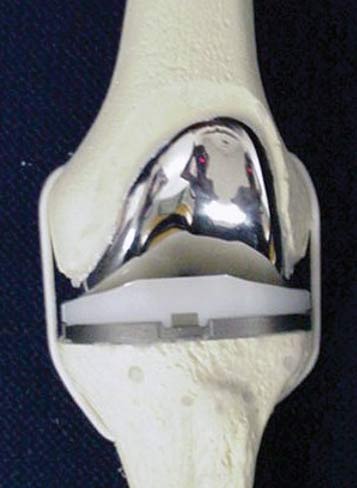Though often considered more of a niche procedure, replacing only the diseased part of the knee offers advantages to the right patient, including a faster recovery and higher satisfaction with the overall results, says Seth S. Leopold, MD, a professor of orthopedics and sports medicine at the University of Washington in Seattle. Dr. Leopold recently discussed the advantages and disadvantages of unicompartmental knee arthroplasty, and what it takes to perform the procedures successfully in the outpatient setting.
Q: What are the main benefits of partial knee replacements?
A: The technique leaves all of the cartilage on the patella, and surgeons replace only the part of the joint where arthritis has done
damage instead of all of the knee's compartments as they do during total replacements. For these reasons, patients who undergo partial knees often think the joint feels more natural or "normal" after surgery. Very few patients who undergo
a total knee replacement ever forget that they've had surgery — the joint always feels a bit mechanical. Studies involving patients who had a total knee performed on one leg and a partial replacement performed on the other found
that patients generally preferred the partial knee.
Patients who undergo partial knee replacements often think the joint feels more natural after surgery.
Another advantage is that partial replacements are less complex procedures performed through smaller incisions, factors that can reduce some of the surgical risk and make recoveries faster. Post-operatively, partial knee replacement patients tend to experience substantially less pain and can often walk unassisted within about a week of the operation.
Q: Then why aren't uni-knees performed more frequently?
A: The most important reason is that studies suggest partial replacements are not as durable as total replacements — for several
reasons. Most knee implants are attached with cement, and there's less overall bone surface available to cover with cement during a partial replacement. Instead of 10 square inches of coverage in a total knee replacement, cement covers
only a few square inches in a partial knee.
Additionally, the disease state that led to the need for a knee replacement in the first place could cause the onset of arthritis in the non-replaced compartments of the joint. If a patient has only the medial compartment replaced, for example, the patellofemoral joint may develop painful arthritis in the years following surgery — and it may become bothersome enough for the patient to seek a revision.
Studies have found that the likelihood of a total knee replacement continuing to function 10 years post-op is around 95%, compared with closer to 85% following uni-knees. That's not a bad percentage for partial replacements, but it's lower than the long-term success rates of total knees.
Q: How do surgeons identify appropriate candidates?
A: There's little disagreement about the types of patients who can undergo the procedure successfully. Generally speaking, unicompartmental
arthroplasty is performed in the medial or lateral compartment of the knee, so a patient's arthritis should be limited to either of those compartments. Additionally, patients should not have inflammatory conditions that would predispose
them to future cartilage issues. Rheumatoid arthritis, lupus or gout, for example, could cause arthritis that is likely to damage the remaining cartilage of the knee.
It's not possible during partial knee replacements to correct severe joint malalignments in the way surgeons can during total replacements, so the knee's anatomy should be fairly straight and without severe varus (bow leggedness) or genu valgum (knocked knees). The knee also needs to be fairly mobile. Patients should be able to straighten the joint to near-full extension or have good flexion of about 90 degrees. Additionally, both cruciate ligaments should be intact. Fixation surfaces are smaller in partial replacements, so the patient's body weight is a significant factor. I shy away from performing partial knees on patients weighing more than 200 pounds.
Patient selection is even more important in the outpatient setting. Surgeons must identify individuals who are healthy and motivated to undergo this type of procedure. In order to go home the day of surgery, patients must be reasonably fit and mobile, and understand that they will experience some pain. Their providers will take steps to treat their pain successfully, but patients must be prepared to endure some discomfort while recovering at home. It's important to educate patients about how they can reasonably expect to feel after surgery in order to set realistic expectations. Doing so will set them — and your facility — up for success.
.svg?sfvrsn=be606e78_3)

.svg?sfvrsn=56b2f850_5)